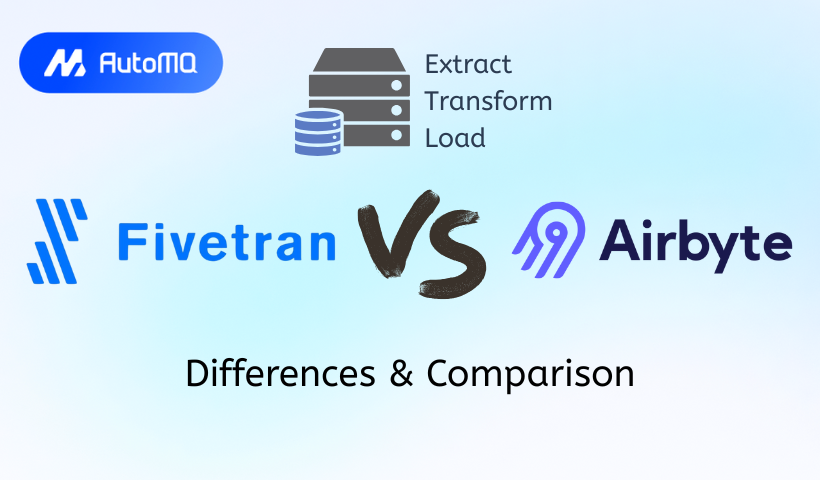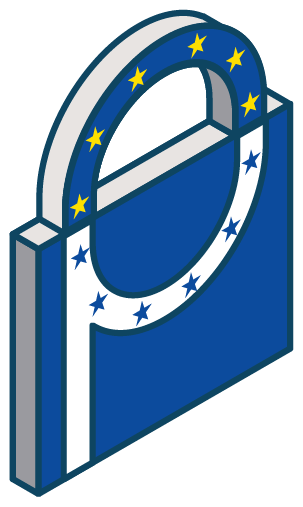Overview
In today's data-driven landscape, efficiently moving data from various sources into a central repository for analysis is paramount. The Extract, Load, Transform (ELT) paradigm has emerged as a popular approach, especially with the rise of powerful cloud data warehouses. Two prominent players in the ELT space are Fivetran and Airbyte. This blog post aims to provide a comprehensive comparison to help senior software engineers understand their differences and choose the right tool for their needs.
What is ELT? A Quick Refresher
Traditionally, data integration involved Extract, Transform, Load (ETL), where data was transformed before being loaded into a data warehouse. However, ELT flips this model:
Extract: Data is pulled from various source systems (databases, SaaS applications, APIs, etc.).
Load: The raw, untransformed data is loaded directly into a destination, typically a cloud data warehouse (e.g., Snowflake, BigQuery, Redshift) or a data lake.
Transform: Once the data is in the warehouse, transformations are applied using the warehouse's processing power, often with tools like dbt (Data Build Tool) [1].
This approach offers several advantages, including faster ingestion times, access to raw data for diverse analytical needs, and leveraging the scalability of modern cloud data warehouses for transformations.
Fivetran: The Managed ELT Service
Fivetran is a commercial, fully managed ELT service designed for automation and reliability [2]. It aims to simplify the data integration process by providing pre-built, maintenance-free connectors.
How it Works
Fivetran operates as a SaaS platform. Users configure connectors through a web-based UI, and Fivetran handles the data extraction, schema mapping, and loading processes. It automatically adapts to schema changes in the source and ensures data consistency.
Key Concepts/Features
Connectors: Fivetran offers a wide array of pre-engineered connectors for popular databases, SaaS applications, event streams, and file storage systems. These connectors are maintained by Fivetran.
Automated Schema Migration: Fivetran automatically detects and propagates schema changes from source to destination, minimizing manual intervention [2].
Transformations: While Fivetran focuses on EL, it integrates seamlessly with dbt for post-load transformations. It offers features like Fivetran Transformations (integrated dbt Core) and supports orchestrating dbt Cloud projects.
Deployment: Primarily a SaaS offering. For enhanced security and control, Fivetran provides options like SSH tunneling, VPN, and AWS PrivateLink. More advanced deployment models, sometimes involving deploying parts of the Fivetran architecture in the customer's cloud environment, are available for specific enterprise needs [3].
Security & Compliance: Fivetran emphasizes security with features like column hashing, role-based access control (RBAC), and compliance with standards such as SOC 2, ISO 27001, HIPAA, and GDPR [4].
![Fivetran Architecture [13]](https://static-file-demo.automq.com/6809c9c3aaa66b13a5498262/68f5ec09b01c48f9df577dfa_67480fef30f9df5f84f31d36%252F685e6541758cc670a24c6c21_iDfj.png)
Pros
High ease of use and automation.
Reliable, pre-built connectors maintained by Fivetran.
Strong security features and compliance certifications.
Excellent for teams wanting to minimize pipeline maintenance.
Cons
Pricing can become significant, especially with high data volumes (based on Monthly Active Rows - MAR) [5].
Limited customization options for existing connectors.
Building entirely new connectors is generally not user-driven, relying on Fivetran's roadmap or partner programs.
Airbyte: The Open-Source ELT Platform
Airbyte is an open-source data integration platform built for flexibility and community-driven development [6]. It aims to commoditize data integration by offering a vast number_of_connectors and tools for building new ones.
How it Works
Airbyte's architecture is built around Docker containers, with components like a web UI/API server, scheduler, workers, and Temporal for workflow orchestration [7]. Connectors are also containerized, allowing them to be built in any language.
Key Concepts/Features
Connectors: Airbyte boasts a rapidly growing list of connectors, contributed by both the Airbyte team and its community. Connectors have different certification levels (e.g., certified, community) indicating their maturity and support level.
Connector Development Kit (CDK): Airbyte provides a CDK that simplifies the process of building new connectors, enabling developers to contribute to the ecosystem or build custom connectors for their specific needs [8]. A Connector Builder UI further assists in this process.
Transformations: Airbyte supports basic normalization out-of-the-box. For more complex transformations, it integrates with dbt (both dbt Core and dbt Cloud). Users can also run custom transformation logic via custom Docker containers [7].
Deployment:
Open Source: Can be self-hosted using Docker Compose or Kubernetes.
Airbyte Cloud: A managed service offering that handles infrastructure and scaling.
Airbyte Enterprise: A self-hosted version with additional enterprise features like SSO, RBAC, and dedicated support.
Security & Compliance: Airbyte Cloud provides security features and manages compliance. For self-hosted deployments, security is largely the user's responsibility, though Airbyte provides guidelines [9].
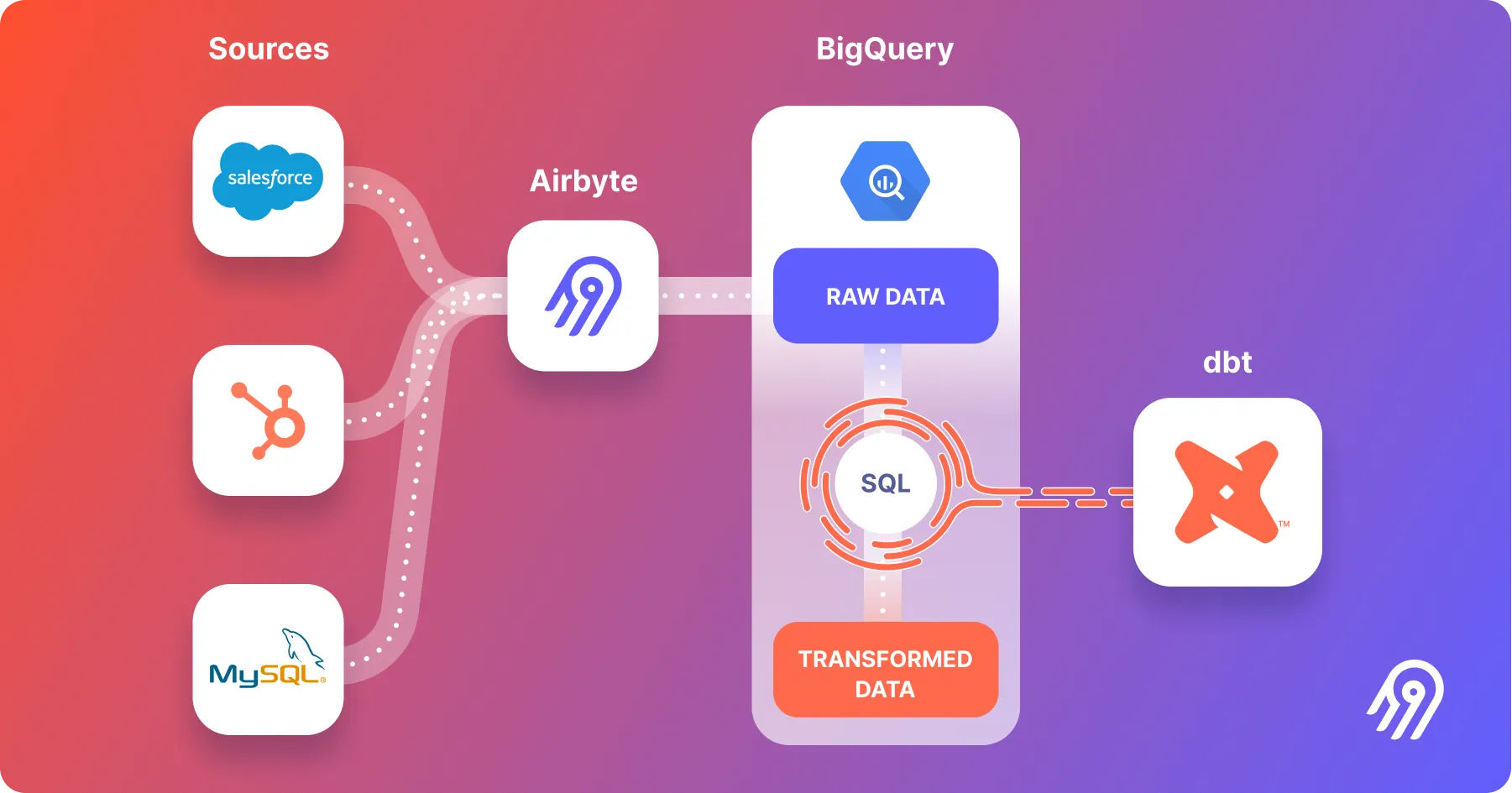
Pros
Open-source and highly extensible.
Large and rapidly expanding connector ecosystem.
Flexible deployment options (self-hosted, cloud).
Potentially lower cost, especially if leveraging the open-source version effectively.
Active community support.
Cons
Self-hosting requires significant operational overhead and expertise.
Connector quality and maturity can vary, especially for community-contributed connectors.
Debugging issues with community connectors or self-hosted deployments can be challenging.
Airbyte Cloud pricing (credit-based) can also become complex to predict for some use cases.
Fivetran vs. Airbyte: Side-by-Side Comparison
| Feature | Fivetran | Airbyte |
|---|---|---|
| Core Model | Commercial, fully managed SaaS | Open-source core, with managed Cloud and Enterprise offerings |
| Connector Ecosystem | ~300+ high-quality, maintained connectors [2] | ~350+ connectors (growing), mix of certified and community; supports long-tail sources via CDK |
| Connector Dev. | Limited (Function Connector, Partner Program SDK) | Highly accessible (CDK, Connector Builder UI, any language) [8] |
| Transformations | Primarily post-load via dbt integration (managed & dbt Cloud) [1] | Basic normalization, dbt integration (Core & Cloud), custom Docker transformations [7] |
| Deployment | SaaS, Hybrid options (e.g., Business Critical for VPC/PrivateLink) [3] | Self-hosted (Docker, Kubernetes), Airbyte Cloud, Airbyte Enterprise (self-hosted) [6] |
| Pricing Model | Consumption-based (Monthly Active Rows - MAR) [5] | Open-source (free + infra/ops cost), Airbyte Cloud (credit-based), Enterprise (custom) [10] |
| Ease of Use | Very high for setup and maintenance; "set it and forget it" | UI for configuration; self-hosting has steeper learning curve. Airbyte Cloud aims for ease. |
| Scalability | Managed by Fivetran | Depends on deployment (Kubernetes for self-hosted); Airbyte Cloud manages scaling. |
| Security | Strong, enterprise-grade; multiple certifications (SOC 2, ISO, HIPAA) [4] | Features in Cloud/Enterprise; self-hosted security is user-managed. Data residency options [9]. |
| Support | Official support tiers, documentation | Community (Slack, GitHub, Discourse), official support for Cloud/Enterprise, documentation |
| Extensibility | Low to moderate | Very high, core design principle |
| Data Residency | Options available based on chosen region/deployment [3] | Options available for Cloud; self-hosted determined by user's infrastructure |
Detailed Breakdown
Connector Ecosystem: Fivetran focuses on quality and reliability for its curated set of connectors. Airbyte offers a broader range due to its open-source nature, but the quality of community connectors can vary. If you need a connector for a niche or internal system, Airbyte's CDK is a significant advantage.
Data Transformation: Both platforms embrace the ELT paradigm and heavily rely on dbt for transformations. Fivetran's managed dbt Core integration is convenient. Airbyte offers similar dbt integration and adds options for basic normalization (which can sometimes be sufficient for simpler use cases) and running custom transformation scripts in Docker containers, providing more flexibility.
Deployment and Hosting: Fivetran is primarily a SaaS tool, which simplifies operations. Airbyte offers more choices: full control with self-hosting (but also full responsibility), or a managed experience with Airbyte Cloud. The choice depends on your team's operational capacity and desire for control.
Pricing and Total Cost of Ownership (TCO): Fivetran's MAR model is usage-based; costs can escalate with high data volumes or frequent updates to many rows [5]. Careful monitoring of MAR is essential. Airbyte Open Source is free software, but TCO includes infrastructure costs, engineering time for setup, maintenance, and upgrades. Airbyte Cloud's credit system needs evaluation against expected usage. For self-hosted Airbyte, managing and scaling the underlying infrastructure (like Kubernetes clusters) and the Airbyte components themselves requires engineering resources [10].
Ease of Use and Management: Fivetran typically wins for out-of-the-box ease of use and low management overhead. Airbyte Cloud aims to match this. Self-hosted Airbyte, while offering a UI, requires more technical expertise for ongoing management, troubleshooting, and upgrades.
Scalability and Performance: Fivetran manages scalability transparently. Airbyte's scalability, when self-hosted, depends on the underlying infrastructure (e.g., properly configured Kubernetes). Airbyte Cloud handles this for its users. Performance can also depend on the specific connector's implementation and the source/destination system's limitations for both platforms.
Security and Compliance: Fivetran has a strong focus on enterprise security and provides multiple certifications [4]. Airbyte Cloud offers security features, and Airbyte Enterprise adds more advanced options. For open-source Airbyte, ensuring security and compliance is the user's responsibility, though features like connection credential storage and secrets management are available.
Support and Community: Fivetran provides official support with SLAs. Airbyte has a vibrant open-source community offering support through forums and Slack, with official support for its paid offerings.
Extensibility and Customization: This is Airbyte's core strength. The CDK allows building connectors for virtually any source or destination [8]. Fivetran is less extensible by design, prioritizing stability and managed service for its supported connectors.
Key Considerations for Choosing
Selecting between Fivetran and Airbyte depends heavily on your organization's specific context:
Team Size and Technical Expertise:
Fivetran: Ideal for teams that want to minimize data pipeline maintenance and prefer a managed service.
Airbyte: Suitable for teams with engineering resources comfortable with managing open-source software and infrastructure (for self-hosting) or those who opt for Airbyte Cloud.
Budget and Pricing Predictability:
Fivetran: MAR-based pricing can be predictable if row change volumes are understood, but can also be a concern for highly volatile or large datasets.
Airbyte: Open-source can mean lower software costs but higher operational costs. Airbyte Cloud's credit model needs careful estimation.
Connector Needs:
Fivetran: If all your required connectors are well-supported and high-quality by Fivetran, it's a strong contender.
Airbyte: If you need connectors for long-tail sources, internal systems, or want the ability to build custom connectors, Airbyte is more flexible.
Data Volume and Change Frequency:
High volumes of frequently changing data can significantly impact Fivetran's MAR costs.
For Airbyte self-hosted, this translates to higher infrastructure and operational load.
Security and Compliance Mandates:
Fivetran: Strong choice if you require established certifications and a fully managed secure environment out-of-the-box.
Airbyte: Airbyte Cloud/Enterprise offers robust security features. Self-hosted requires careful configuration to meet strict compliance needs.
Transformation Complexity and Control:
- Both support dbt. Airbyte offers more built-in flexibility for custom transformations if dbt isn't the only tool you want to use immediately after extraction/load.
Common Issues and Best Practices
Fivetran
Common Issues: Managing and predicting MAR costs, especially with sources that update entire tables frequently; limitations in customizing connector behavior for specific edge cases.
Best Practices:
Closely monitor MAR consumption per connector.
Understand how different sync modes impact MAR.
Leverage historical sync modes effectively.
Use Fivetran's system tables and logging to track usage and identify schema changes [11].
Rely on dbt for all complex transformations post-load.
Airbyte
Common Issues: Stability and reliability of some community connectors; operational overhead of self-hosting (upgrades, monitoring, scaling); debugging complex issues in a distributed system or within custom connectors.
Best Practices:
For critical pipelines, prioritize certified connectors or thoroughly vet community connectors.
Implement robust monitoring and alerting for self-hosted deployments.
Version control Airbyte configurations (e.g., using tools like
octavia-cli).Allocate sufficient resources if self-hosting on Kubernetes.
Stay updated with Airbyte releases for bug fixes and new features, but test upgrades in a staging environment [12].
Engage with the community for support and contribute back where possible.
Conclusion
Both Fivetran and Airbyte are powerful ELT solutions that can significantly streamline data integration.
Fivetran excels as a highly reliable, automated, and managed service, ideal for organizations prioritizing ease of use and minimal operational overhead, provided its connector offerings and pricing model align with their needs.
Airbyte offers unparalleled flexibility, extensibility, and a potentially lower software cost through its open-source model, making it attractive for teams with the technical capability to manage it or those who opt for its Cloud/Enterprise versions for a more managed experience, especially when custom or a wide variety of connectors are needed.
The "best" choice is not universal. It depends on a careful evaluation of your organization's technical resources, budget, specific connector requirements, scalability needs, and tolerance for operational management versus vendor lock-in. As senior software engineers, understanding these trade-offs is key to architecting a data stack that truly serves your business.
If you find this content helpful, you might also be interested in our product AutoMQ. AutoMQ is a cloud-native alternative to Kafka by decoupling durability to S3 and EBS. 10x Cost-Effective. No Cross-AZ Traffic Cost. Autoscale in seconds. Single-digit ms latency. AutoMQ now is source code available on github. Big Companies Worldwide are Using AutoMQ. Check the following case studies to learn more:
Grab: Driving Efficiency with AutoMQ in DataStreaming Platform
Palmpay Uses AutoMQ to Replace Kafka, Optimizing Costs by 50%+
How Asia’s Quora Zhihu uses AutoMQ to reduce Kafka cost and maintenance complexity
XPENG Motors Reduces Costs by 50%+ by Replacing Kafka with AutoMQ
Asia's GOAT, Poizon uses AutoMQ Kafka to build observability platform for massive data(30 GB/s)
AutoMQ Helps CaoCao Mobility Address Kafka Scalability During Holidays
JD.comx AutoMQ x CubeFS: A Cost-Effective Journey at Trillion-Scale Kafka Messaging
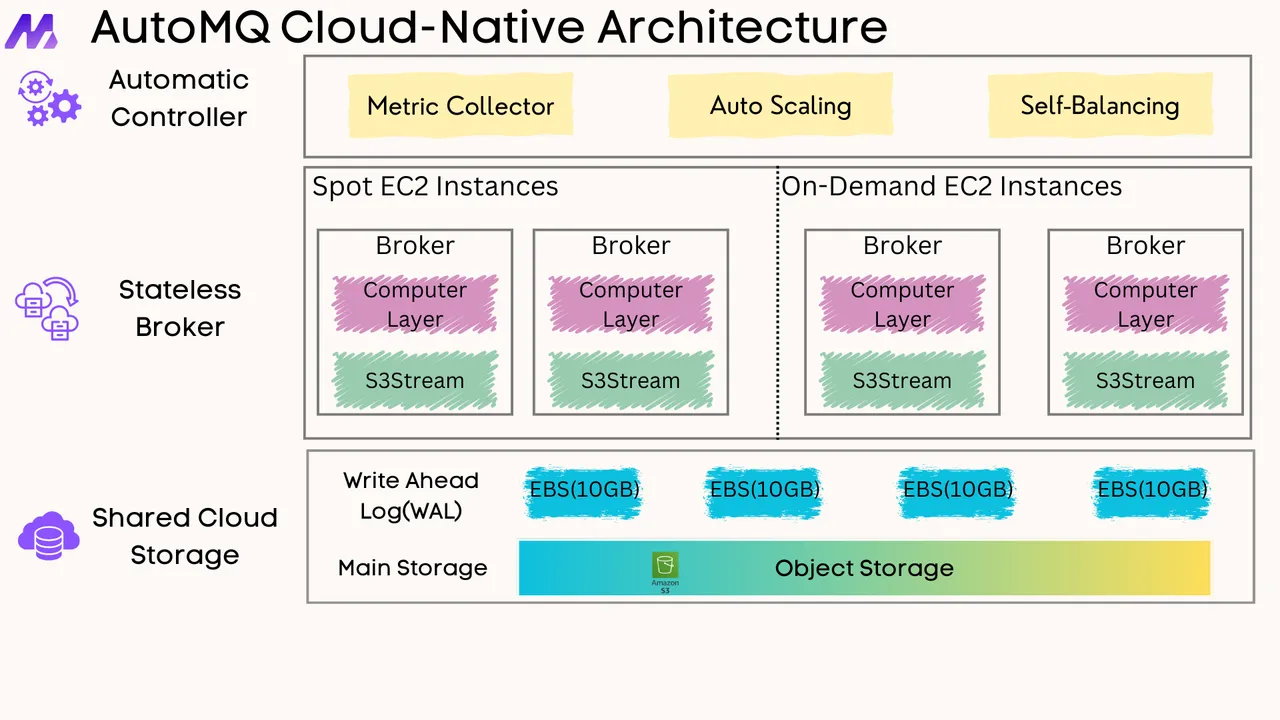





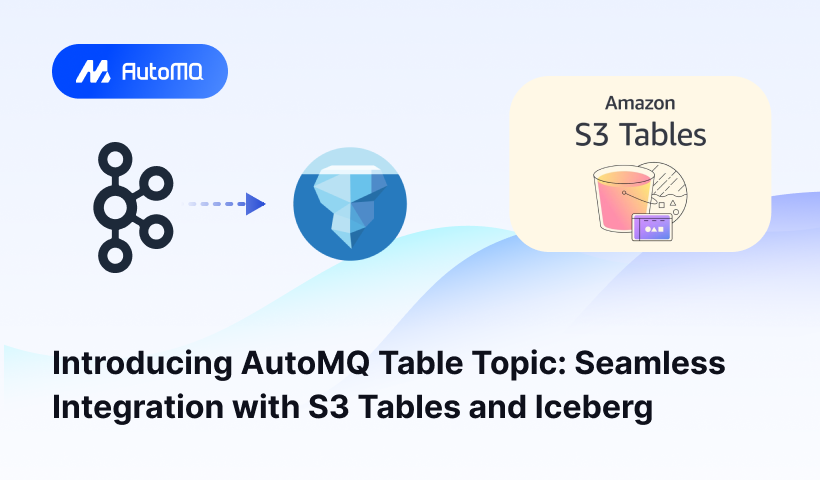
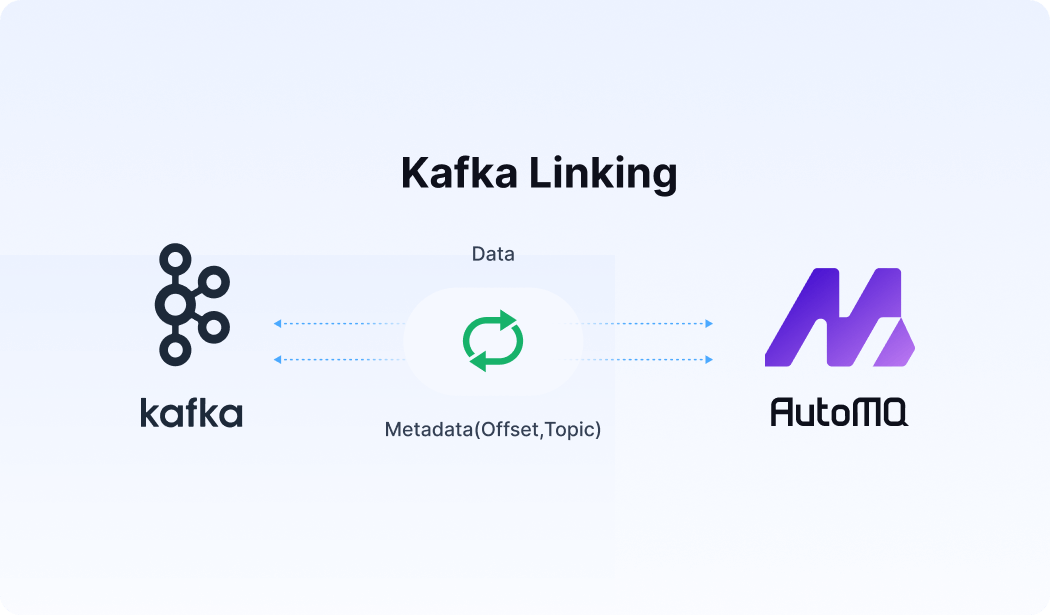




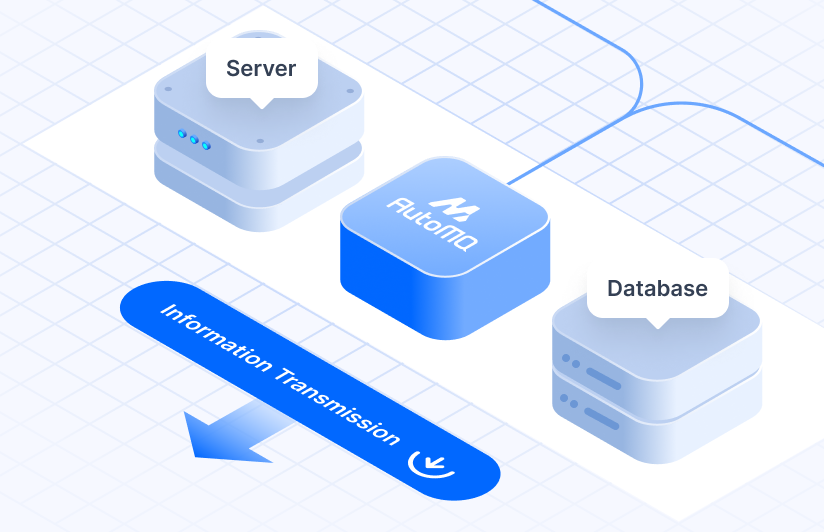



.png)
